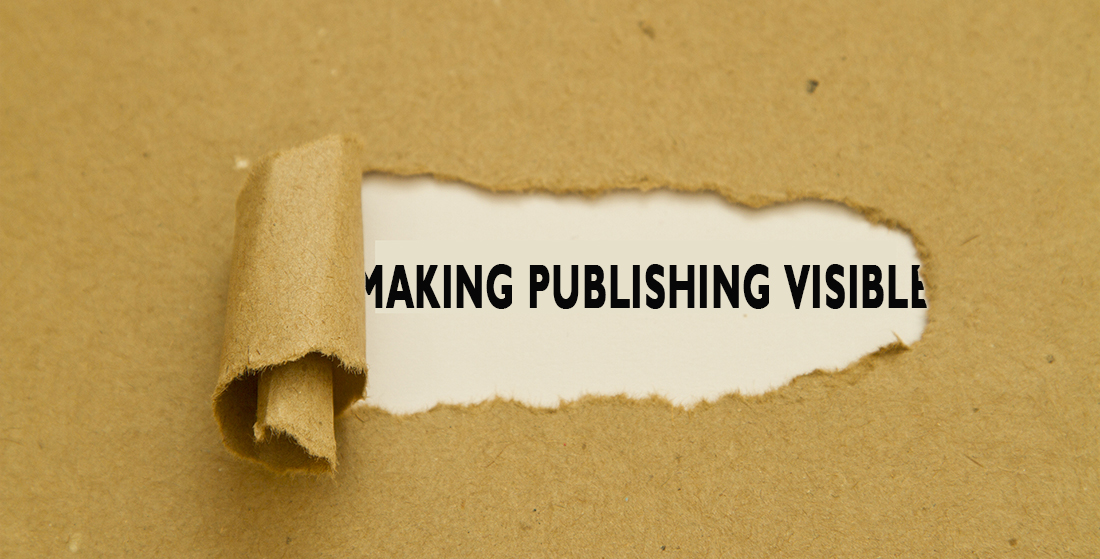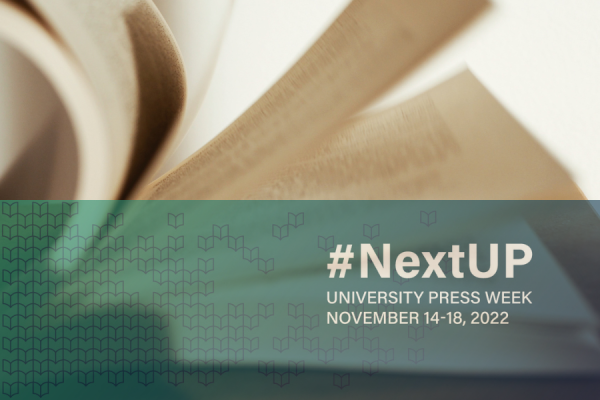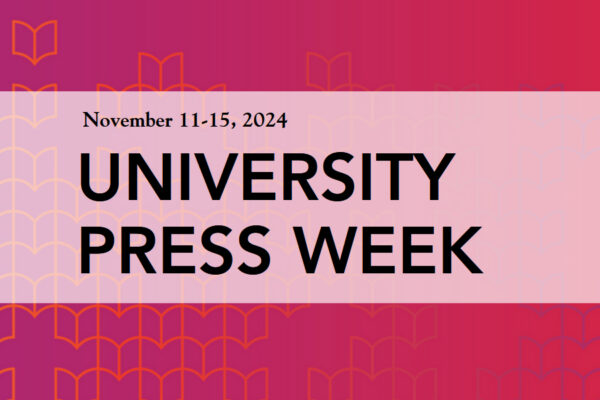We are excited to be participating once again in the University Press Week blog tour. This year’s #UPWeek theme is #LookItUp: Knowledge Matters. Today, the blog tour is focusing on how social media has helped spread the word about important scholarship. Our contribution to the tour explores how we have been using social media as a tool to connect with scholars and readers to make the work of publishers more visible.
As evidenced by the multitude of questions we are asked by authors, conference attendees, and the general public, many aspects of the work done by publishers remains a mystery to readers. To make matters worse, aside from our imprint on the spine of the book and the information on the copyright page (you know, that page you skip over), our contributions to the book are largely invisible. While we might argue that’s the way it should be, the unseen nature of our work could be contributing to misunderstandings about the value of university presses in an age of self-publishing and digital dissemination. As an open access university press, it is particularly important to distinguish our processes from those of predatory firms and commercial publishers in order to highlight our commitment to quality and the value added by university presses to the important work of scholars.
To achieve greater transparency and to move beyond sharing information on a need-to-know basis, we decided to find ways to connect more purposefully with the broader scholarly community with the aim of making the work of publishers more visible—as accessible as our books!
For several years now, we have been increasing our presence on social media and experimenting with different media platforms, all the while building an audience of fellow publishers, readers, scholars, authors, and media. We have concentrated on using a consistent tone and developing engaging content about our publications but the surprising aspect of building this profile was the rewarding and exciting opportunity it afforded us to connect with prospective authors and the readers of our books. So when it came time to engage in a conversation about the work of publishers we turned back to these platforms to address the most questions that are most frequently asked.
You probably guessed it already, but first up was the question on every newly graduated scholar’s mind: “how do I get my dissertation published?” We have always been happy to address this and any other question but this time we wanted to answer it more fully all the while creating a resource that could be used again and again.
We turned to Facebook, a platform that is considered familiar and easy to use by most of our target audience. We settled on running a Facebook Live event featuring a conversation with our senior acquisitions editor, Pamela Holway. Pamela presented her top tips for revising a dissertation and spoke about what an acquisitions editor looks for in a submission. Viewers were able to ask their questions in the comments throughout the presentation and we were able to provide real-time answers and to share our expertise more openly. Facebook Live allowed our audience to authentically engage with a real person in a casual environment. After our presentation, we posted a recording of the event on our blog along with a written summary for those who missed the presentation or were interested in the highlights. The video, which has already racked up hundreds of views, can be watched at any time by anyone.
Another question that is more specific to AU Press is “what does open access publishing entail?” Interest in open access has increased significantly in the past few years but many of the details and processes remain unclear or obscured by myths. We’ve been involved in OA since the beginning, so as part of Open Access Week, we shared “The Truth about Open Access Publishing” with our institution. We recorded the presentation and shared it with our followers on our social media channels. The result is a video resource available to any publisher or scholar interested in exploring open access.
Live tweeting is another tool that we have been using to introduce some additional transparency about our industry. Whether we’re attending a panel, exhibiting at a conference, or launching a book, we share the experience through social media. In September, we attended the Book Publishers Association of Alberta annual conference. Publishers from across our province gathered together for professional development, industry updates, and some inspiring keynotes. We live-tweeted the entire weekend so that our followers could peak into the room to see the successes from the past year, the changes or trends in the industry, and other details we as “industry insiders” sometimes forget to share.
We are by no means the only university press using social media in innovative ways. Yesterday, Princeton UP hosted an #AskAnEditor Twitter party, addressing questions about “untangling an enormous ball of yarn” (thanks for that quotable quote, @PrincetonUPress). They, like many other presses, are using social media platforms to showcase the unique characteristics of their houses and to demonstrate how each press fits into the larger fabric of scholarly communication.
There is no doubt that content on social media can often be reactionary and vapid, but it also presents entities like university presses a chance to be more transparent and to authentically engage with the people it serves. We hope that by answering questions and sharing our publishing expertise more broadly that authors will feel connected to the work of publishers and less daunted by the process.
Follow the tour around the continent!
Harvard University Press is looking at the role that social media has played in the promotion of Impeachment: A Citizen’s Guide. Editorial Director, Greg Britton, at Johns Hopkins University Press is extolling the virtues of Twitter. Beacon Press is sharing how social media has continued the conversation about one of their books.


